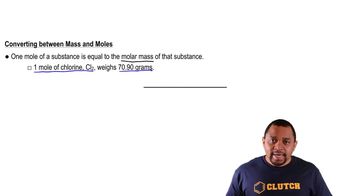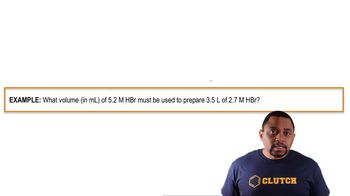Here are the essential concepts you must grasp in order to answer the question correctly.
Molarity
Molarity is a measure of concentration defined as the number of moles of solute per liter of solution. It is expressed in moles per liter (mol/L) and is crucial for calculating how much solute is present in a given volume of solution. In this question, the molarity of the nalorphine solution is given, which allows us to determine how many moles are needed to achieve a specific mass of the drug.
Recommended video:
Conversion between mass and moles
To solve problems involving solutions, it is often necessary to convert between mass (grams) and moles. This is done using the molar mass of the substance, which is the mass of one mole of that substance in grams. For nalorphine, knowing its molar mass allows us to convert the desired dose in milligrams to moles, which can then be used in conjunction with the molarity to find the required volume of solution.
Recommended video:
Mass and Moles Conversion
Dilution and volume calculations
When working with solutions, understanding how to calculate the volume needed to achieve a certain concentration is essential. The relationship between molarity, volume, and moles is given by the equation M1V1 = M2V2, where M is molarity and V is volume. In this case, once the number of moles needed is determined, the volume of the 1.3 * 10^-3 M solution can be calculated to find out how many grams of nalorphine are required.
Recommended video:
Dilution Calculation Example
 Verified step by step guidance
Verified step by step guidance


